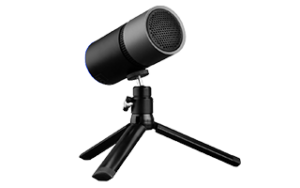Kate tested the Thronmax Pulse microphone through the art of, erm, bird facts?
Thronmax M8 Pulse microphone: plug in and play (and play we did)
– My colleague when I switched over to the Thronmax Pulse on a Zoom call
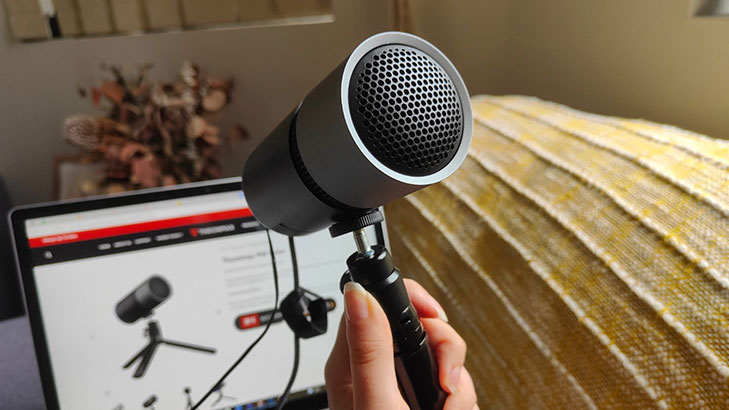
Thronmax M8 Pulse: Overview
This is a neat little microphone. With an $89 price tag, I wasn't expecting great things. But as soon as I started using it, a Reviews.org colleague commented on how good my audio was sounding.
Bear in mind, even with a good-quality sound, this is still an entry-level microphone for limited uses. There are only two modes, for instance; cardioid and noise-cancelling. There's no flashy settings or groovy features that you can play around with. Either you're recording with background noise, or you're not.
Which makes the Thronmax Pulse perfect for live streaming, zoom presentations, YouTube videos and even conversational style podcasts. It's probably best suited for gaming, and feels like it's been designed with that use in mind. The base of the Thronmax Pulse has an LED light all around, which lights up blue when it's on and looks very cool.
The boom arm that you can purchase with it is also handy for clearing desk space, although I personally found that the microphone is so compact that it didn't take up too much space at all.
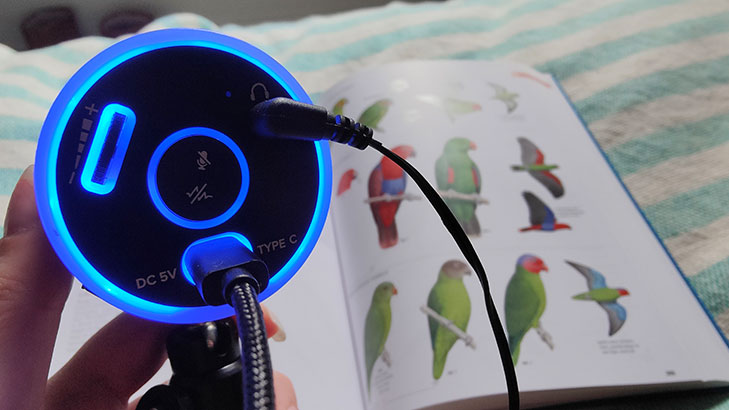
How much does the Thronmax Pulse cost?
The Thronmax Pulse is actually pretty good value considering you can get it for less than $100 from most places.
Bear in mind, this is for the microphone only. The boom-arm, if you want it, will set you back $88, and a pop filter (which this reviewer recommends if you're recording audio) will set you back around $35.
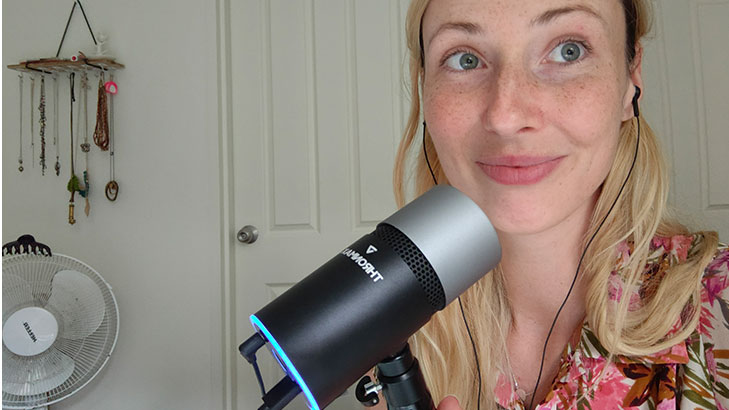
Features and modes
As mentioned, there's just two modes on the Thronmax Pulse: noise-cancelling, and non noise-cancelling (cardioid). You can hear the difference in the samples below.
Initially, the noise-cancelling mode was virtually impossible to use during Zoom calls; the microphone needs to be quite close to your mouth, otherwise it mistakes your voice as background noise. I experienced a lot of "we can't hear you" on work calls when I switched the mode over. Up close and holding the tripod, it was much clearer, and I eventually found a stack of books to put next to my laptop as a microphone stand so the sound came through. The other option was to hold onto the microphone during the call, which made me feel like I was hosting Miss Universe or something.
Cardioid mode is better if your space is quiet. My voice came through nice and clear on Zoom calls, however, so did the leaf blower that revs up every Wednesday morning at 10am. But the sound was clear and the comments from my team were positive.
The Thronmax Pulse comes with a 360 degree stand, which sits securely on a desk, but the legs also push together to create a comfortable option for a hand-held microphone. It's a USB connection, so you simply plug it into your laptop or computer and you're ready to go. It's so simple to use and set-up took all of 30 seconds.
As for recording quality, this bad boy records a sample rate of 96Khz and a bit rate of 24-bit. You've also got a mute button and a volume button on the back. This really is a set-and-forget microphone that doesn't require too much thinking.
- Dual mode; Cardioid and noise cancelling
- 360-degree stand
- Records in 96khz 24-bit
- 3.5mm headphone monitoring port
- Mute button
- Volume control knob
- USB connection
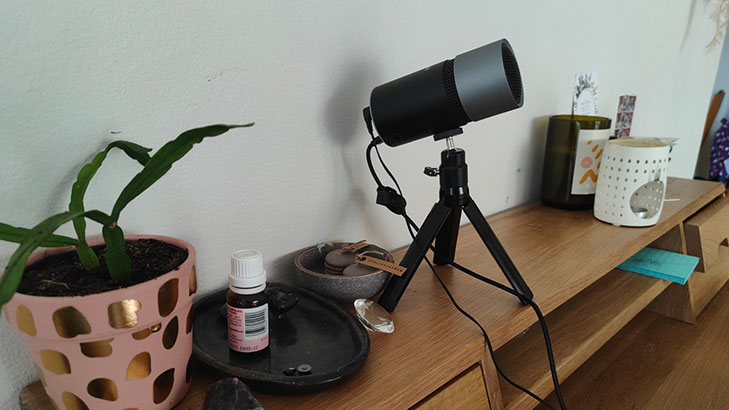
Thronmax Pulse: Recording samples
Friends, it's crunch time. I can tell you all about the features of the Thronmax Pulse until the cows come home but it means diddly squat until you hear it for yourself.
And what better way to judge the clarity and crispness of this microphone than to read aloud from one of my favourite books of all time. A true classic that only gets better with age. A rollercoaster of excitement, a thrilling deep dive.
The Australian Bird Guide.
Don't you judge me. Birds are cool.
So without further adieu, get comfy, pop your favourite headphones on have a listen to the recording samples of the Thronmax Pulse (while learning a few fun facts).
Content made on Kapwing
Laptop recording for comparison
Okay, let's start with a baseline. This is just recording straight of my laptop: a Microsoft Surface. The window was open and my neighbours decided that was the very moment they felt it was imperative to start tinkering on the piano. Also, a train went by. As you can hear, if you ever want to record decent audio, do not record straight off the laptop.
Content made on Kapwing
Thronmax Pulse: Noise-cancelling mode
I've got the microphone probably about 10cm away from my mouth here. The quality of sound is definitely muddy. But given the amount of background noise that permeates my apartment; trains, planes, traffic, barking dogs and noisy neighbours, it does a good job of shutting it all out (though I did have all the doors and windows closed). The trade-off is a slightly muddied voice that loses its crispness. If you're submitting a voice track to narrate a movie, it's not going to cut through. But for streaming, or even presenting a workshop or session over Zoom, I'm impressed with the sound quality for a microphone that costs less than $100.
Also, fun fact: Australia has populations of feral wild turkeys.
Content made on Kapwing
Thronmax Pulse: Cardioid mode
I had this a little bit closer to my mouth–probably about 5-7cm away– and it really blew my voice out. You can hear me turning the page at 0:10. There's also no pop-filter protection, and my 'protection' at 0:26 really popped.
Content made on Kapwing
Here, I've moved the microphone a little further away in cardioid mode. It hasn't blown my voice out as nearly as much but you can hear trains going by towards the end of the recording.
Content made on Kapwing
MV88+ Shure microphone
To get a sense of comparison, I also recorded some very exciting red-cheeked parrot content on my MV88+ Shure mic, which I use for professional audio content. Retailing at about five times the price of the Thronmax Pulse, you can definitely hear a difference in sound quality. That being said, the MV88+ is designed for recording audio and plugs into my phone; I can't use it for say, Zoom calls or streaming.
Content made on Kapwing
Conlusion
Is the Thronmax Pulse worth the price?
Do you need a microphone for enhancing your Zoom calls and presentations, or for YouTube videos?
Then the Thronmax Pulse is a nifty little investment that won't break the bank and delivers pretty good audio. I would definitely consider it as an option for recording podcasts that are conversational in nature.
Do you need a microphone for more professional settings, like voice over work, or a more storytelling style of podcast? Give this one a miss and invest in a really good quality mic.
Related Articles





